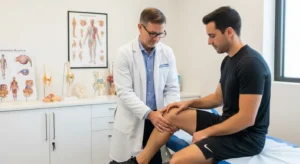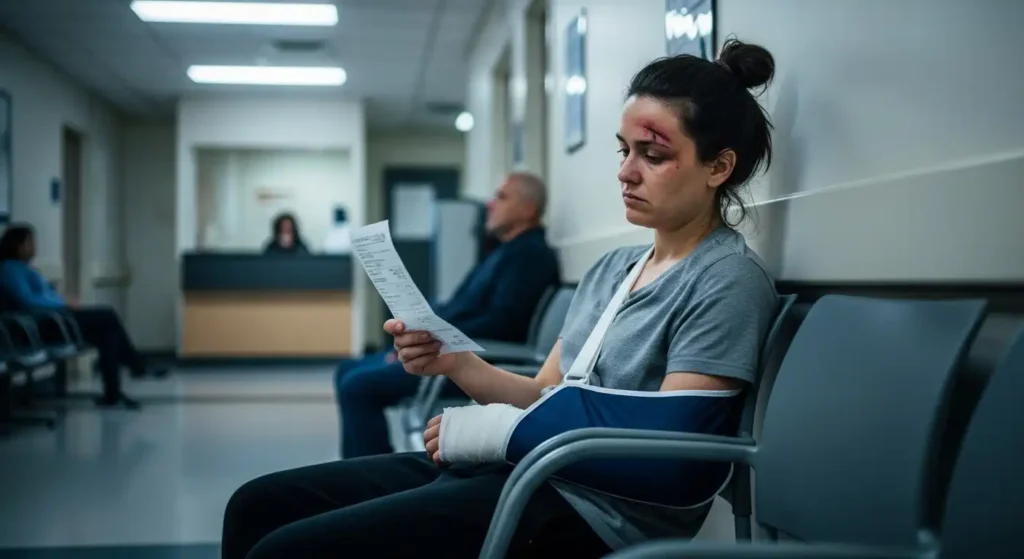Every day, millions of passengers trust Uber, Lyft, and other rideshare services to get them to their destinations safely. Accidents still happen. Whether it’s a distracted driver, another vehicle running a red light, or an unexpected road hazard, rideshare accidents can cause serious injuries in just seconds. Broken bones, concussions, whiplash, and soft tissue damage are common — but the story doesn’t end with emergency room visits or ambulance rides.
The true financial impact of Uber and Lyft accidents often stretches far beyond the first medical bill. Immediate costs are easy to see: hospital charges, medications, maybe car repairs. Yet there’s a whole layer of hidden costs that can blindside victims and their families:
- Ongoing medical care long after the crash
- Lost income from time away from work
- Out-of-pocket expenses for vehicle repairs or rentals
- Emotional trauma and changes in daily life
This article exposes these less obvious burdens — the hidden costs of being injured in a rideshare accident. By understanding what’s at stake, you can better prepare yourself and make informed decisions when pursuing compensation after an Uber or Lyft crash.
1. Medical Expenses Beyond Initial Treatment
 Emergency care is only the first wave of costs after a rideshare collision. Once discharged from the hospital, many face a new round of medical bills. These often include:
Emergency care is only the first wave of costs after a rideshare collision. Once discharged from the hospital, many face a new round of medical bills. These often include:
- Specialist consultations for orthopedics, neurology, or pain management that stretch months beyond the initial incident.
- Rehabilitation costs such as physical therapy sessions, occupational therapy, and home exercise equipment. Recovery timelines vary widely, turning what begins as a few appointments into ongoing expenses.
- Dental work frequently becomes necessary if airbag deployment or direct impact causes facial trauma. Procedures like implants and reconstructive surgery rarely fall under standard health coverage limits.
- Mental health counseling rideshare injury: Emotional fallout can be steep. About 9% of accident survivors develop PTSD, while anxiety and depression are common, leading to ongoing therapy and prescription costs.
Each layer of follow-up care increases financial strain, making the true cost much higher than the hospital bill collected at discharge.
2. Lost Income and Employment Challenges
Injuries from a rideshare accident often extend well beyond physical recovery, directly impacting your financial stability and professional future. Time spent away from work due to missed work caused by injury frequently results in lost wages, forcing you to exhaust PTO or even go unpaid if your leave runs out. Many accident victims discover that overtime hours and performance-based bonuses—reliable sources of extra income—simply disappear during the recovery period.
- Disability income loss becomes a reality for those unable to return to their previous job, especially after severe injuries.
- Some face diminished job performance from chronic pain or cognitive issues, risking demotion or termination.
- Permanent disabilities may require a complete career shift or force you into lower-paying roles, reducing lifetime earning potential.
These hidden financial setbacks can outlast medical bills, making it essential for anyone injured in a rideshare accident to understand the true scope of their employment-related losses.
3. Vehicle-Related Financial Burdens
Dealing with the aftermath of a rideshare accident often goes beyond medical and employment challenges. The financial impact tied directly to your vehicle can be substantial, especially when you look past insurance settlements.
Deductibles Add Up Quickly
Most insurance policies—whether health or auto—require you to pay deductibles out-of-pocket before coverage kicks in. Auto repair deductibles for collision damage can range from $500 to $2,000, depending on your policy. Health insurance may require another deductible if you need care related to injuries from the accident.
Rental Car Fees While Waiting for Repairs
Even if the other party is at fault, you might have to pay for a rental car upfront while your claim is processed or your vehicle is in the shop. Many basic insurance policies offer limited rental reimbursement, leaving you to cover any extra days or upgrades yourself. For those who depend on their vehicle for work or family obligations, these rental car fees after an accident can quickly escalate.
Vehicle repair costs after a rideshare accident are rarely just about fixing dents; they trigger a series of expenses that add significant weight to the hidden costs of being injured in a rideshare accident.
4. Legal Costs and Complexities in Rideshare Accident Claims
Rideshare accident claims are rarely straightforward. Liability may involve the individual driver, the rideshare company (Uber, Lyft), other motorists, or even local government entities if road conditions played a role. These overlapping responsibilities add layers of legal complication.
Why You Need Legal Representation in a Rideshare Accident
- Understanding Multi-Party Liability: An experienced attorney knows how to navigate the complexities of multiple parties being responsible for the accident.
- Navigating State-Specific Regulations: Each state has its own laws regarding rideshare operations. A knowledgeable attorney will be familiar with these regulations and how they impact your case.
- Dealing with Uber and Lyft’s Unique Coverage Periods: Uber and Lyft have specific timeframes during which their insurance coverage applies. An attorney can help determine if this coverage is relevant to your claim.
Common Challenges with Insurance Claims against Uber or Lyft
- Delaying Responses: Insurance companies may intentionally delay their responses to claims as a tactic to minimize payouts.
- Disputing Fault: Uber and Lyft may argue that their drivers were not at fault in order to avoid paying for damages.
- Low Settlement Offers: It is not uncommon for Uber and Lyft to offer settlements that are significantly lower than the actual damages incurred.
Without legal counsel, many victims accept less than they deserve due to these tactics employed by the rideshare companies.
The Cost of Legal Representation
Attorney fees are typically based on contingency, meaning they only get paid if you win your case. However, there may still be upfront costs involved, such as expert consultations and court filings. It is important to weigh these costs against the potential recovery you may receive from your claim.
Legal support not only increases your chances of fair compensation but also protects you from insurance company strategies that exploit gaps in your understanding of the process. This professional guidance helps keep your financial recovery on track while you focus on healing.
5. Emotional Trauma and Lifestyle Disruptions
 The emotional impact of a rideshare accident goes beyond visible injuries. Many injury victims experience ongoing anxiety, sometimes developing a fear of riding in vehicles or driving altogether. Social isolation often follows, as recovery may require weeks or months away from friends, colleagues, and community activities.
The emotional impact of a rideshare accident goes beyond visible injuries. Many injury victims experience ongoing anxiety, sometimes developing a fear of riding in vehicles or driving altogether. Social isolation often follows, as recovery may require weeks or months away from friends, colleagues, and community activities.
Common lifestyle changes for injury victims include:
- Avoiding social gatherings due to limited mobility or self-consciousness about injuries.
- Missing out on key family milestones—birthdays, graduations, reunions—because of medical appointments or physical limitations.
- Cancelled travel plans that were months in the making.
- Falling behind on educational or career advancement opportunities because of extended absence.
“It’s not just the pain—it’s missing my daughter’s first recital and turning down a job offer I’d waited years for.”
These disruptions don’t always heal with time. The emotional scars left by trauma can linger and reshape daily life long after physical wounds have closed.
6. Unique Insurance Challenges Specific to Rideshare Accidents
Rideshare insurance coverage for Uber and Lyft accidents is notoriously complex. The amount and type of insurance that applies depends heavily on the driver’s status at the time of the crash:
- Waiting for a Ride Request: Coverage is typically limited, often offering only minimal liability protection.
- En Route to Pick Up Passengers: Company-provided coverage increases, but gaps can still exist depending on the policy.
- Actively Transporting Riders: Full commercial insurance is usually in effect, though claim limits and exclusions may apply.
Multiple liable parties add another layer of complication to every rideshare accident claim.
You may find yourself dealing with:
- The driver’s personal auto insurance
- The rideshare company’s commercial policy
- Other motorists’ or third-party insurers
Each insurer may point fingers or deny responsibility, creating delays and confusion. Navigating these overlapping policies requires clear documentation and an understanding of driver status liability in rideshare accidents—key details often overlooked when calculating the hidden costs of being injured in a rideshare accident.
Seek Help From Experienced Uber Accident Lawyers
When dealing with the hidden costs of being injured in a rideshare accident, having the right support can make all the difference. Uber accident lawyers have the expertise to navigate insurance policies, prove liability, and maximize your compensation.
They will:
- Handle negotiations with insurers who may try to minimize payouts
- Ensure that every expense—such as medical bills, lost wages, and emotional impact—is properly documented
- Guide you through each legal step so that nothing is missed
Don’t go through this complicated process on your own. Contact a knowledgeable Uber accident lawyer to protect your rights and secure the recovery you deserve.
Conclusion
A rideshare accident often brings a range of hidden costs that extend well beyond immediate medical bills. Many victims underestimate the ripple effects—lost wages, long-term healthcare, psychological trauma, and insurance challenges all stack up quickly. Navigating these hidden costs requires comprehensive support and skilled legal guidance. When you seek fair compensation, factor in every potential impact on your finances, career, health, and quality of life to avoid leaving money on the table. Full recovery—financial and personal—depends on understanding the complete picture and pursuing every resource available.

